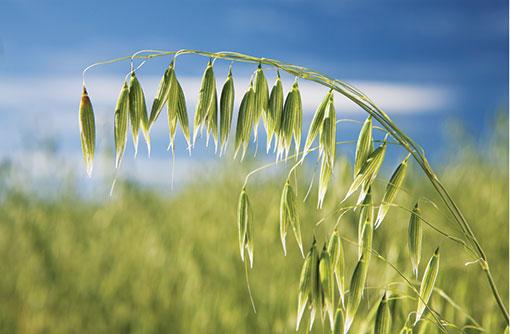Oats have a bright future despite the glut

The greater area planted in 2012, together with production increases in all regions, has created one of the biggest oat crops for some time, giving oat traders a short-term headache.
“Due to the well-documented problems with autumn 2012 drillings, more oats were planted and they yielded better than expected in all regions, with the largest increases seen in Scotland and the West Midlands,” said Helen Plant, senior analyst at HGCA.
As a result, UK demand will need to exceed the long-term trend if such a big crop is to be balanced, she said.
“There’s been a steady rise in the amount of oats used for human consumption and the industrial market during the past 20 years, but animal feed uses have fallen during the same period of time,” she said at a recent Campden BRI oat conference.
Added to this, the UK’s late harvest meant imports from Scandinavia were strong in July and August, so exports will also need to increase significantly, she added. “And there will be tough competition in export markets. The UK wasn’t the only country to produce a bigger crop than usual.”
Fortunately, a return to more normal cropping patterns for harvest 2014 is likely, so any price reduction should be temporary, she said. “Winter planting has been going well across most of Europe, in good conditions. Remember that in a typical year, oats account for just 3% of the UK arable area.”
The UK oat milling industry is small and has been a victim of boom and bust in the past, pointed out Alan Meikle of Morning Foods and chairman of the British Oats and Barley Millers’ Association (BOBMA), as just three main millers process a total of 0.5m tonnes each year.
“As a result, most millers contract grow their requirements now,” he explained. “That’s because they need oats of good quality and consistency to meet the soaring demand for human consumption. And it’s this demand which has been responsible for some quite significant changes in oat growing.”
The 2012 weather may have resulted in a surplus of oats, but they are unlikely to meet the millers’ requirements for premium end uses, he said. “Last autumn, we got into a situation where unknown varieties were going into the ground, producing oats of questionable quality and potentially crashing the price.”
However, professional growers have nothing to fear from this short-term market upheaval, he continued. “Grower groups, producing oats for contracts linked with wheat prices, are in operation. There have been dramatic improvements in yields, quality and on-farm profitability from this co-operative approach, which together with a willingness to share information, has benefitted the whole industry.”
New product development is also alive and kicking in a vibrant supply chain, said Mr Meikle. “It’s gone far beyond porridge and oat-based breakfast cereals. We now have oat milk, oat-based yoghurt and dessert toppings – to name just a few – and there’s an exciting pipeline of innovative oat products in development.”
Other high-value, but lower-volume, markets for oats are also emerging, said Cark Maunsell of Oat Services. “Science is driving these new markets, which include cosmetics and pharmaceuticals, with scientific evidence having increasing relevance for these sectors, both of which are subject to strict regulations.”
The pharmaceutical market is comprised of three markets – nutraceuticals, cosmeceuticals and nutri-cosmetics – all of which are likely to converge in the future, he predicted.
“Oats already have consumer trust, so using some of their constituents in health and beauty products, or medicinal forms, is a natural development.”
Four health claims have already been approved for oats in the EU, he reported. “The best known of these is the role of beta-glucan in maintaining and lowering cholesterol. But beta glucan from oats is also used as a skin restructuring agent, as it has wound healing and moisturising properties.”
Avenanthramides are the “jewel in the crown” as far as oats are concerned, said Mr Maunsell. “These are very potent antioxidants that can be used for redness reduction and their antihistamine properties. They’re a treatment for skin inflammation and they have an effect on muscle fatigue.”
In addition, collodial oatmeal produces non-greasy skin creams, while there’s a growing market for oats to be used as the lining in latex gloves, he revealed.
| Trait expectations |
|---|
New breeding technologies are being used to increase the selection of key traits and make better use of genetic variation in oats, Athole Marshall of Institute of Biological, Environmental and Rural Sciences Aberwystwyth told the Campden BRI oat conference. The aim is to produce oat varieties that are appropriate for end uses, but also have the required agronomic performance and milling quality, he stressed. Markers are now used for a number of traits –including the dwarfing gene, beta glucan, oil content, disease resistance, flowering time and winter hardiness, while high-throughput phenotyping is also in operation, he revealed. “The research input into oats is just one 20th of what it is for other cereals,” he said. “But we are making rapid improvements.” |
Winter oats could be 2013 surprise winner

